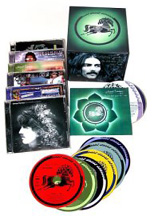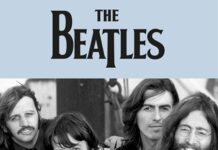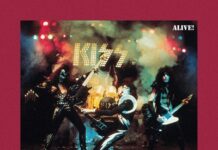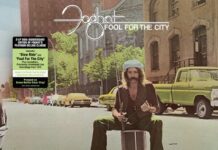1976’s Thirty Three & 1/3 is a funky diversion for Harrison with a moderately light and humorous bite. This is especially evident in the self-effacing “This Song,” which pokes fun at his legal problems regarding the “My Sweet Lord” and the Chiffons’ “He’s So Fine” sound-alike fiasco. It would become, along with “Crackerbox Palace,” another wry and airy tune, a Top 40 single. Filling out the album, tunes like “Woman Don’t You Cry For Me,” “Dear One” and “Beautiful Girl” show that Harrison was refining his songwriting skills and coming into his own, even if it meant becoming more mainstream in the process.
Three years later, George Harrison, unremarkable at the time, finds the lead guitarist in an advanced state of solemnity, perfectly at ease in his surroundings and loving every minute of it. Recently married to Olivia Arias and spending much of his time in Hawaii and at Formula 1 races, Harrison cut what one might interpret as a load of lofty and sanguine tunes with titles like “Love Comes To Everyone,” “Your Love Is Forever “ and “Soft Touch.” Sure, and then it gets really confusing when “Here Comes The Moon” (an incalculable follow-up to “Here Comes The Sun”; the bonus demo is much more interesting than the original version) and “Not Guilty” (check out Anthology 3 for the Beatle version) come lolling out of your speakers. Still, “Blow Away,” a Top 20 single, and “Faster,” Harrison’s ode to auto racing, managed to keep the former mop top in the vanguard for the time being.
Somewhere In England was Harrison’s first record of the 80s, released some six months after John Lennon’s untimely demise. The album’s single, “All Those Years Ago,” which featured Ringo Starr and Paul McCartney, became a fitting tribute to the fallen leader of the Fabs. Once again, we get a bonus demo, one called “Save The World,” that outshines the original. For the most part, however, there isn’t anything particularly captivating here as Harrison apparently struggled to complete the album in the face of a changing music industry. For that, he managed to sneak in a jab or two, especially on the opening track “Blood From A Clone,” where the quiet one unapologetically chastises the powerbrokers pushing him into the MTV generation. Surly, the wry inclusion of Hoagy Carmichael’s “Baltimore Oriole” and “Hong Kong Blues” would have been the death knell for anyone else at the time; but in the hands of a former Beatle, the novelty slipped by the bean counters with one swift kick to the gonads. It wasn’t to last.
For 1982’s Gone Troppo, Harrison dutifully submitted to the modern day qualms and came out smelling like a dirty rat, albeit a disheartened man who needed a break from the studio. Whenever a superstar is thrown into a room with a group of session guys, the results are either highly inspirational or adversely miscalculated. This record falls narrowly in between, as it sort of bops along at its own pace, trying at times to be painfully contemporary, while occasionally dipping into impetus waters on things like the instrumental “Greece,” and “The Mystical One.” Harrison’s obsession with cement fills out the liner notes, and it’s easy to see he definitely needed an extended break.
And so it goes that in 1987, George Harrison returned to the frontlines with a stunning collection called Cloud Nine. Pulling out all the stops with a cache of A-list friends like Eric Clapton, Elton John and Jeff Lynne to pitch in, it was the beginning of an extremely active period for Harrison as he churned out videos, formed the Traveling Wilburys and even played a few select live shows. The sogginess of his two previous efforts from the decade was propped up and given a mild facelift by Lynne’s semi-autocratic production. One listen and “That’s What It Takes,” “Got My Mind Set On You” and the sumptuous “When We Was Fab” confirm that Harrison’s abilities as a songwriter, singer and guitarist had not diminished one iota. Even so-called filler, like the title track, “Fish On The Sand” and “Devils’ Radio” make this record a worthwhile spin.
In light of a hit album, Harrison suddenly was ubiquitous. Both his solo and Traveling Wilburys videos were in heavy rotation on MTV, and the world was suddenly caught up in a burst of Georgemania. So, as a cap off of sorts, Harrison joined Clapton in Tokyo and Osaka for a series of concerts. Recorded for prosperity, the resulting two-disc Live In Japan was released to a rather lukewarm response in the summer of 1992. It was out of print for years, fetching top dollar on e-bay. The reissue, which has been remastered for SACD, was well worth the wait. Backed by Clapton and his band, Harrison takes an enlightening walk down memory lane. The Beatle songbook is opened up wide and classics like “Something” and “While My Guitar My Gently Weeps” weave in and out of the more obscure numbers like “Old Brown Shoe” and “Piggies.” Harrison’s solo career also gets a comprehensive reading with “Give Me Love,” “Dark Horse,” “My Sweet Lord,” “Isn’t It A Pity,” and several others rolled out and given a nice, spit-shine polish. It may not have the historical significance of The Concert For Bangla Desh, but Live In Japan is a perfect snapshot of the reclusive musician during one of his most productive phases.
To top it all off, The Dark Horse Years, 1976–1992 includes a DVD featuring many of Harrison’s quirky little videos, the Dark Horse feature, interviews and live footage from the December 1991 shows in Japan. It’s not difficult to understand the allure of this package or its working parts, especially if you’re tuned into George Harrison. As the pieces fall together, it becomes clear that the unevenness of his work was merely a reflection of the human foible swallowing up the Beatle myth. And it could be that’s what George wanted all along — a solitary and peaceful life away from the madness of being one of the most popular artists of his generation.
~ Shawn Perry




















